If your website’s content doesn’t rank on the very first search engine results page (SERP) of Google, Bing, DuckDuckGo, or any other search engine, it may as well not exist for most people.
Not only that. Even on SERP page one, there are sharply diminishing returns, in terms of click-through rate (CTR) for all search results after the top result. That means that ranking fifth or sixth instead of second or third can be the difference between being seen and being invisible.
Sistrix has captured this phenomenon nicely in the following chart, which tracks CTR by ranking position:
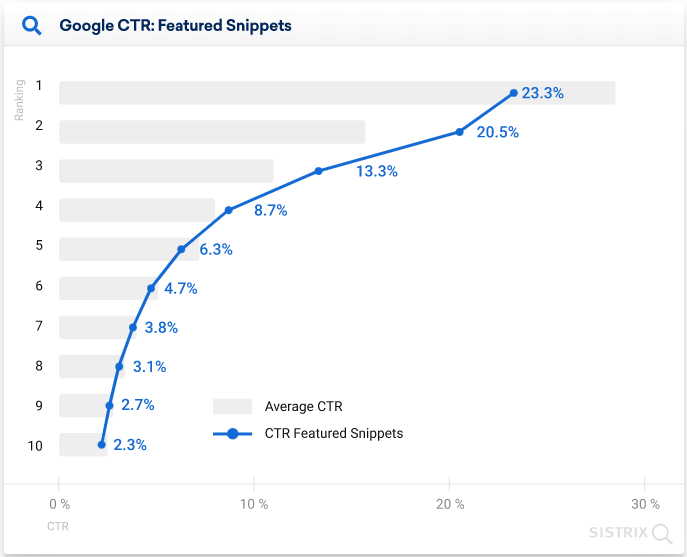
Over one-quarter of Google users click the first organic search result, or twice as many who click the second-ranking result. Similarly, Backlinkto has also found that the top three organic search results collectively get three-fourths of all clicks.
These numbers, plus the growing complexity of SERP pages due to featured snippets, video results, and other “position zero” results, underscore the importance of search engine positioning.
What is search engine positioning?
Search engine positioning is the optimization of a website’s individual pages for a SERP, by making them rank higher and/or appear in more locations on that SERP. It’s a subset of search engine optimization (SEO), as it does not encompass some broader-scale SEO practices like building a flat website structure, creating XML sitemaps to make its URLs more discoverable, and conducting in-depth keyword research.
Search engine positioning versus SEO
SEO is broader than search engine positioning. SEO includes not only the page-level optimizations that fuel search engine positioning, but also the domain-level improvements (such as the number of links to that domain, the domain’s age and response time, etc.) that give a website domain authority.
It may be helpful to think of search engine positioning versus SEO as a square versus rectangle situation: All search engine positioning is SEO, but not all SEO is search engine positioning.
In other words, search engine positioning is usually something you’ll do once you already have a solid SEO plan in place for your website. A positioning strategy might be utilized to get a relatively low-ranking page on an overall high-performing website to rank better.
Think of SEO as the ingredients that create a satisfyingly textured and flavored cake in a bakeshop, and search engine positioning as the icing and decorations that make it stand out in the display.
Let’s look at an example of what a positioning strategy might try to accomplish:
This is the Google SERP for “how to play bridge,” with an annotation added to indicate a page on a well-optimized site that nevertheless might get overlooked. That’s because it has relatively low organic positioning, and doesn’t populate any of the commonly asked questions.
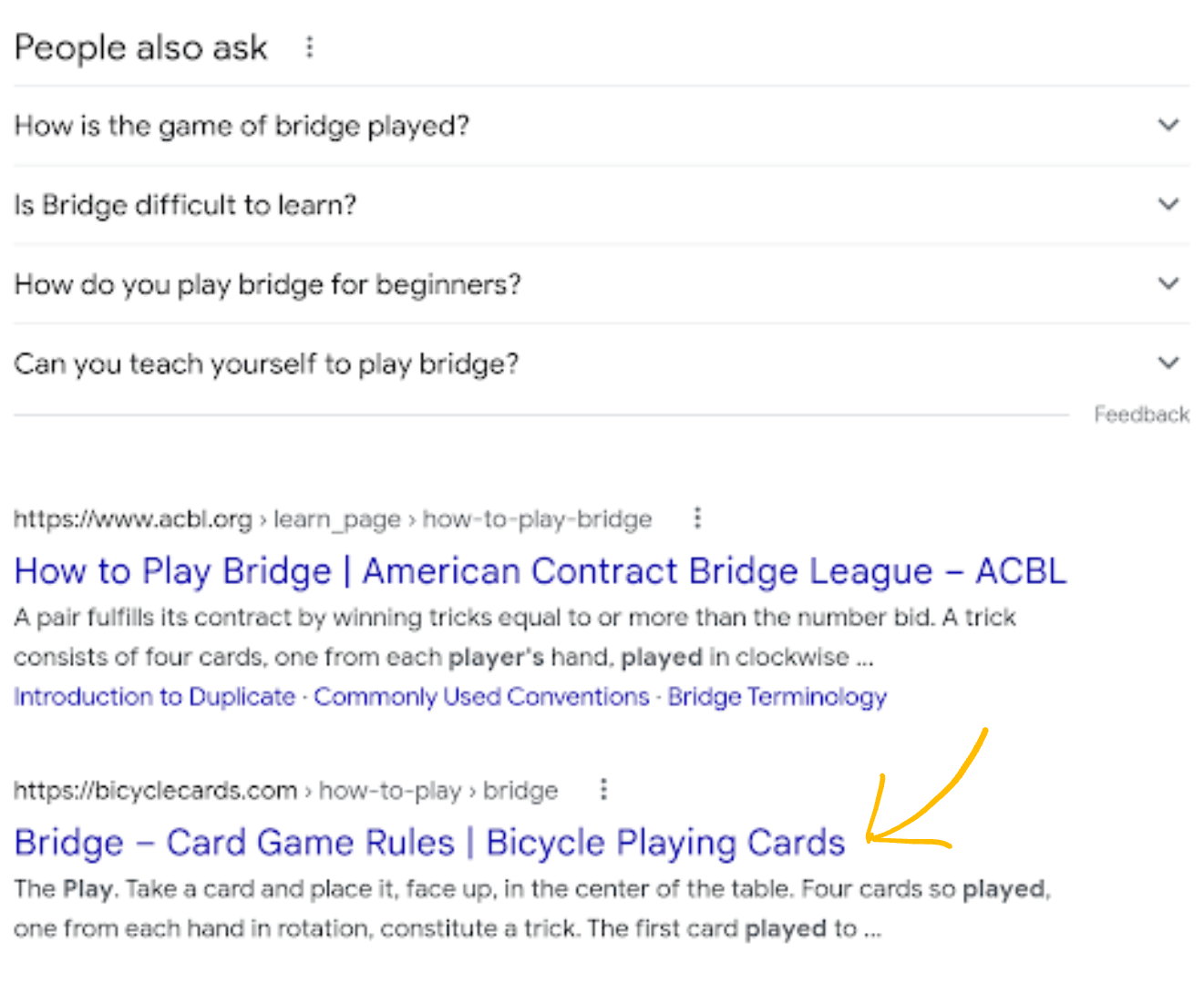
Through search engine positioning, this individual page might be optimized so that it could:
- Move above the higher-ranking websites on this SERP.
- Populate the featured snippet or questions boxes.
- Generally boost its SERP footprint so that it’s more visible on page one.
To do so, though, an SEO expert would need to understand how search engines were ranking this page and why it was coming up (a little) short.
How does a search engine determine a page’s position?
Search engines use their own proprietary algorithms to analyze a website’s content, structure, and relationship to other sites to produce search results. For every search engine, this process starts with a spider, aka a web crawler, that crawls the web and indexes website pages as well as the sites that they link to.
When someone then searches for a term, they’re actually searching the search engine’s index of these pages, rather than the web itself. The SERP they see for their query is determined by what the search engine thinks is “relevant.” Certain attributes may influence this decision, such as:
- Keyword and key phrase usage and density.
- The locations of keywords, e.g. in the site’s URL, title tag and meta description.
- The usage of keyword synonyms and related topics throughout the page.
- The general trustworthiness of the site.
- Backlinks to a page from other sites.
- Mobile-friendliness, loading speed, and other technical SEO factors.
- The geographic location of the searcher.
- The searcher’s history and profile (on Google, at least).
Using these criteria, the search engine scores the page and then presents the search results with the highest scores displayed first. A Google video explains it well here:
Positioning strategy can be done for any search engine, not just Google. Almost 10% of searches happen outside Google, and the possible launch of an Apple search engine could reshape the market. It’s important to have an adaptable positioning strategy that helps your pages rank higher everywhere.
Why is search engine positioning important?
Search engine positioning is the most reliable way to increase the CTR of a website’s relatively low-performing pages. A search result that appears higher up in organic positioning or within a larger area (like a question drop-down) on the SERP will get more clicks.
How you achieve this higher ranking and more prominent placement – and the difficulty involved – will depend on the keywords and key phrases you’re trying to rank for, as well as the structure and strength of the existing website and page. For instance, re-optimizing a page for a highly specific key phrase, rather than a shorter keyword with a much higher search volume, can make it easier to achieve higher organic positioning.
Let’s say we were trying to boost traffic to a page about soap that was good for dry skin. This is the Google SERP for the keyword “soap,” which is intensively competitive, with 759 million search results, including ones related to the SOAP protocol, too. The only organic result most people will ever see is the SOAP Wikipedia link. The rest of the SERP real estate is consumed by the call-out box, questions, maps, and images.
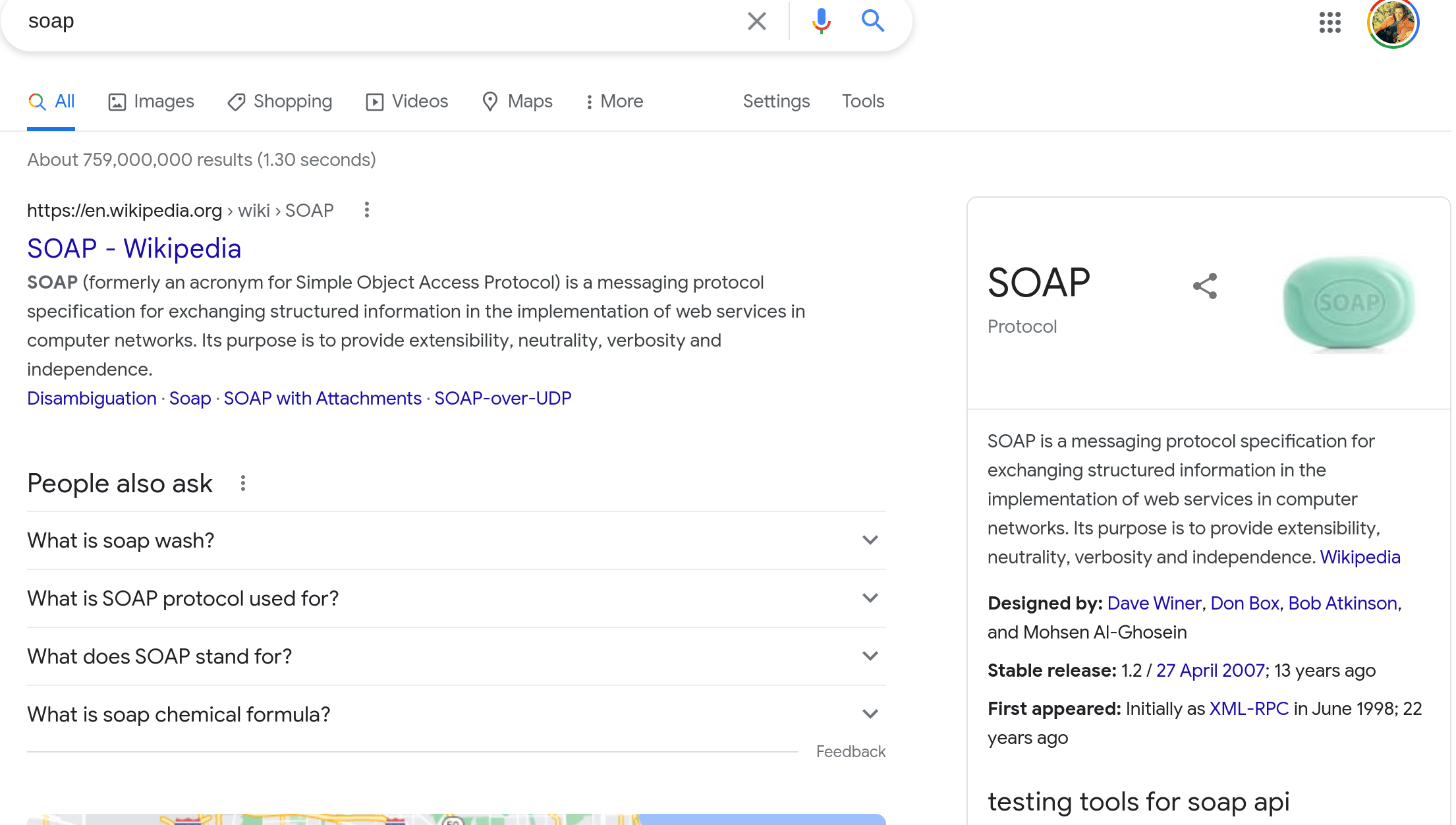
In contrast, here’s the SERP for the key phrase “soap for dry skin”:
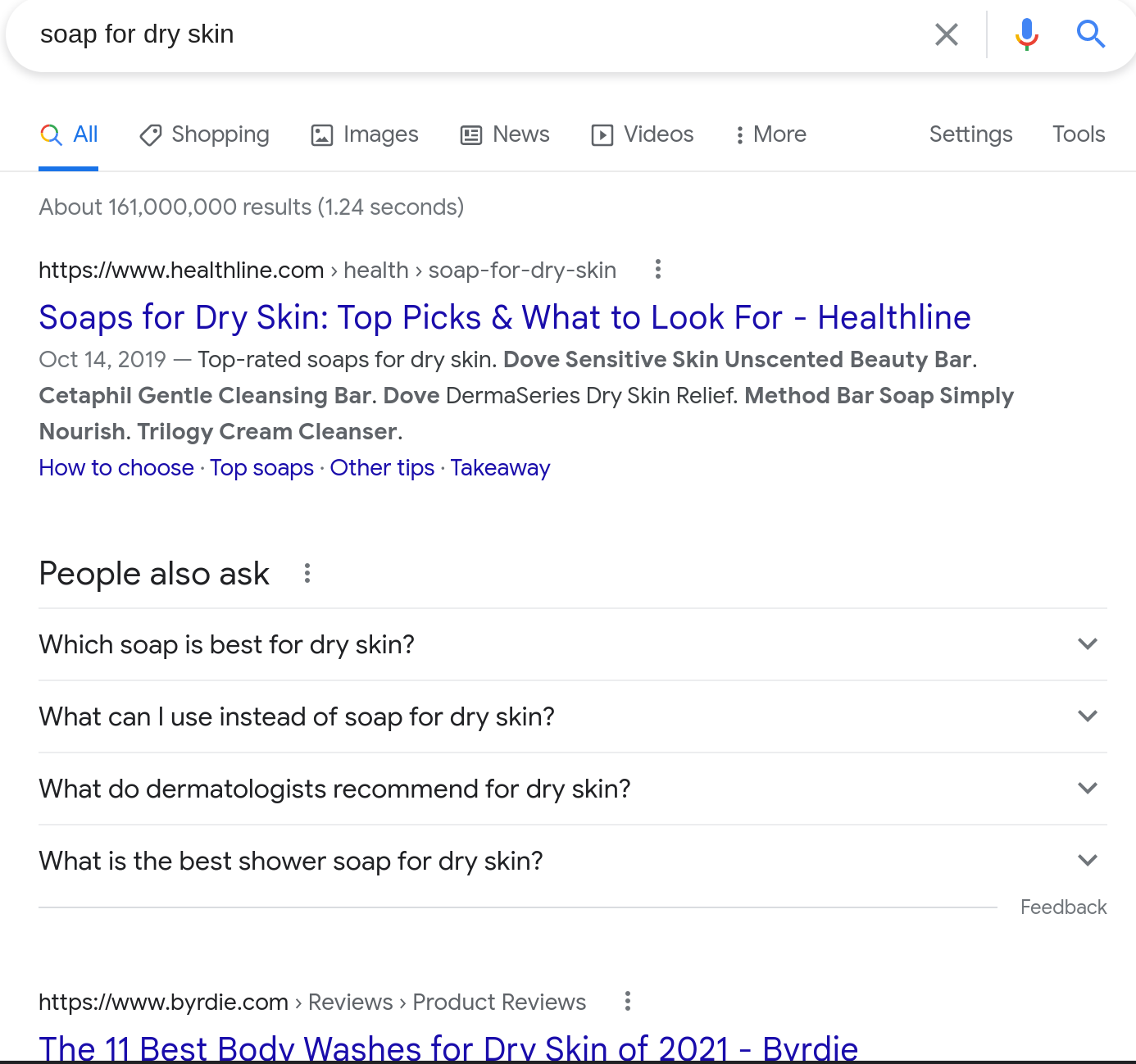
Much less volume overall, plus a better opportunity to gain organic positioning since there’s no Wikipedia box, nor a bunch of ads or photos. This less-searched key phrase might work better for search engine positioning purposes, due to the reduced competition.
Yoast has created a helpful chart to show how keyword and key phrase specificity relate to competition. Sometimes it’s worth trading volume for a better chance at ranking first via longtail keywords and key phrases.
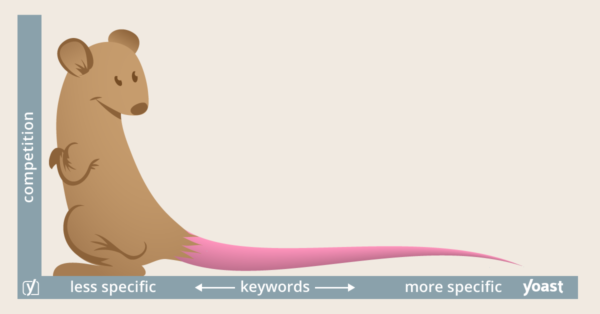
How can you find a page’s search engine positioning?
A page’s average rank and placement on a SERP is its search engine positioning. Google Search Console is useful for seeing a page’s average positioning and can be found under the Performance tab.
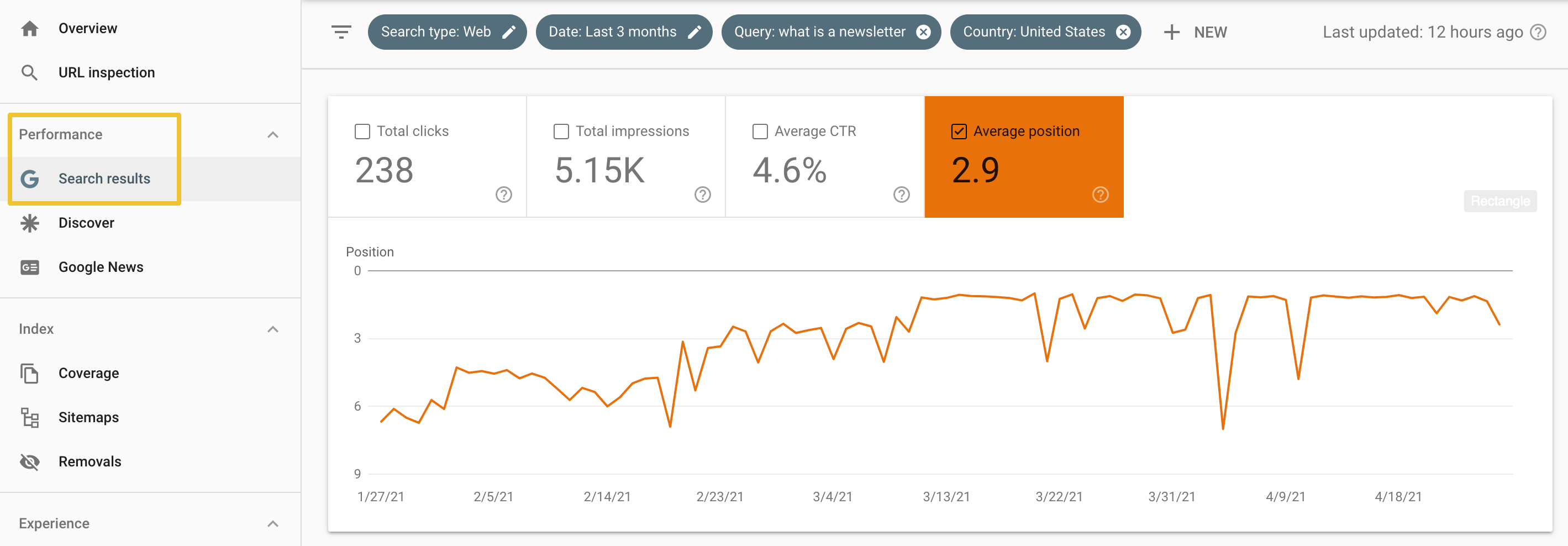
This positioning is not necessarily static. It can change over time as search engines index new pages they deem more relevant, plus it can be positioned differently for individual users.
Maintaining prominent search engine positioning for a long time is possible, though. If your page continues to get a steady stream of traffic and nothing breaks on-page or in its URL structure, it should keep its high organic positioning. The main concerns are broken links and competitor activities.
Broken links can occur for various reasons, but there is more risk involved when doing a website redesign.
During a redesign, you’ll want to ensure that you’re:
- Keeping your URL structure the same, if possible, and using a well-designed 301 redirection plan and set of 404 pages if not.
- Updating content with meta descriptions and title tags that include keywords and key phrases.
- Submitting your XML sitemap to web spiders.
On the competitor side, specific tools such as Ubersuggest and Serpfox are useful in seeing what kinds of keywords and positioning strategies are working for others, and for tracking rankings. With that knowledge, you can know when it’s time to perform additional search engine positioning activities.
How can you improve your search engine positioning?
Better search positioning is achievable with the right strategy. Let’s look at some of the most reliable tips for pushing pages higher and keeping them there.
Tip No. 1: Update the content in question and re-share it on social media
Outdated content is a recipe for a high bounce rate. I say this as someone who once wrote a guide to the mobile game “Plants vs. Zombies 2” in 2013, didn’t update it for years, and saw its bounce rates and overall clicks via Google decline precipitously, until I finally added some new sections and cleaned up its copy.
When updating an individual page’s copy as part of a positioning strategy, keep these best practices in mind:
- Old statistics (more than 2 years old) should be removed and replaced if possible.
- Avoid long introductions or other digressions, especially in sections that follow subheads or titles with questions in them – you want to provide an answer ASAP.
- Longer length doesn’t necessarily mean better quality and relevance, at least in Google’s eyes. In some cases, re-optimization might yield a shorter asset.
- Larger fonts and more subheadings can boost readability and lower bounce rates.
- Copywriting tactics like “bucket brigades” – using colons at sections where the reader might otherwise bounce – can help with positioning by getting searchers to engage more with on-page content.
- Tools like MarketMuse make it easier to see which keywords and phrases you’re including enough of, and which ones could be used a little more liberally.
Finally, after performing these optimizations, re-share the post on social media. That’ll give you some traffic that might help with SEO and search engine positioning.
Tip No. 2: Re-optimize meta tags and meta descriptions for top key phrases
These tags and descriptions are “meta” (from the Greek for “beyond”) because they don’t appear on the page itself but in its source code, where they can be interpreted by search engines, and in the case of descriptions, displayed on the SERP. You want your meta content to include the most popular key phrases, along with an enticing description.
Over time, a page’s meta tags and meta descriptions might become outdated, resulting in a phenomenon called pogo-sticking. This involves a page appearing high up in search results, getting clicked, and then being exited very quickly because it was irrelevant. The searcher then “pogos” down to the next result. This behavior could cause a decline in the pogo-sticked pages’ rankings.
Use Google Search Console to find your best-performing key phrases and then re-optimize your meta content accordingly. Include these phrases near the beginning of the meta tag and description if possible.
Tip No. 3: Deploy and refine an internal linking strategy
Internal linking is a great way to have your higher-ranking pages provide a lift to your lower-ranking ones. An internal linking strategy will also:
- Make your website easier for spiders to crawl.
- Enhance overall site SEO and authority.
Use keyword-rich anchor text in your internal links. This makes it easier for search engines to know what a linked page is about. When you’re designing that anchor text, take the opportunity to reexamine overall keyword usage on your page and see if there’s room for improvement, or if a different strategy (e.g., one built around long-tail key phrases) might be better.
Here’s an example of some adept internal linking. The final link, as annotated, goes to an internal Slate page, and you already know by its anchor text what it’s going to cover.

Tip No. 4: Add or change the page’s featured image
A featured image is the first thing searchers will see on a SERP and on the page it leads to as well. Look at these Google search results for “donut recipe”:
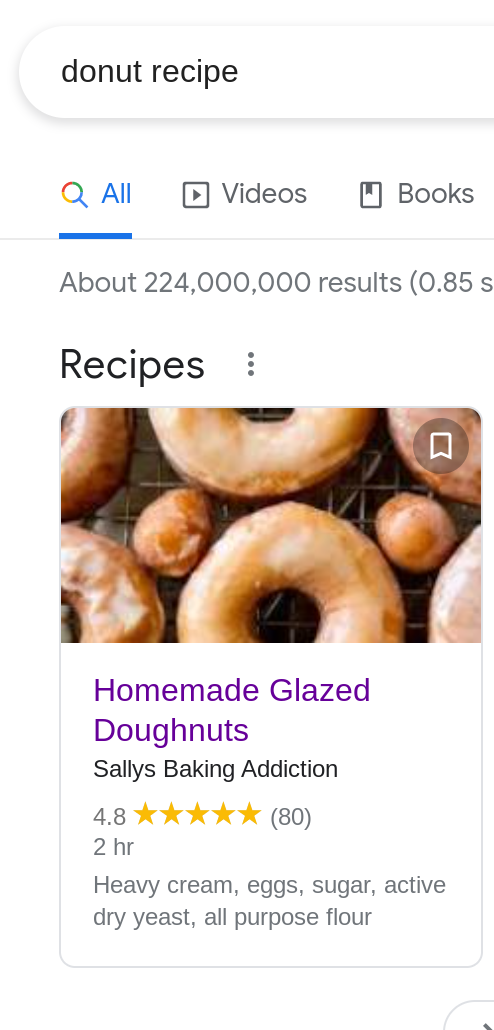
The featured image is attention-grabbing and relevant to the content. On the other end of the spectrum, here’s a Forbes article about rising unemployment claims paired with a picture of a happy couple:
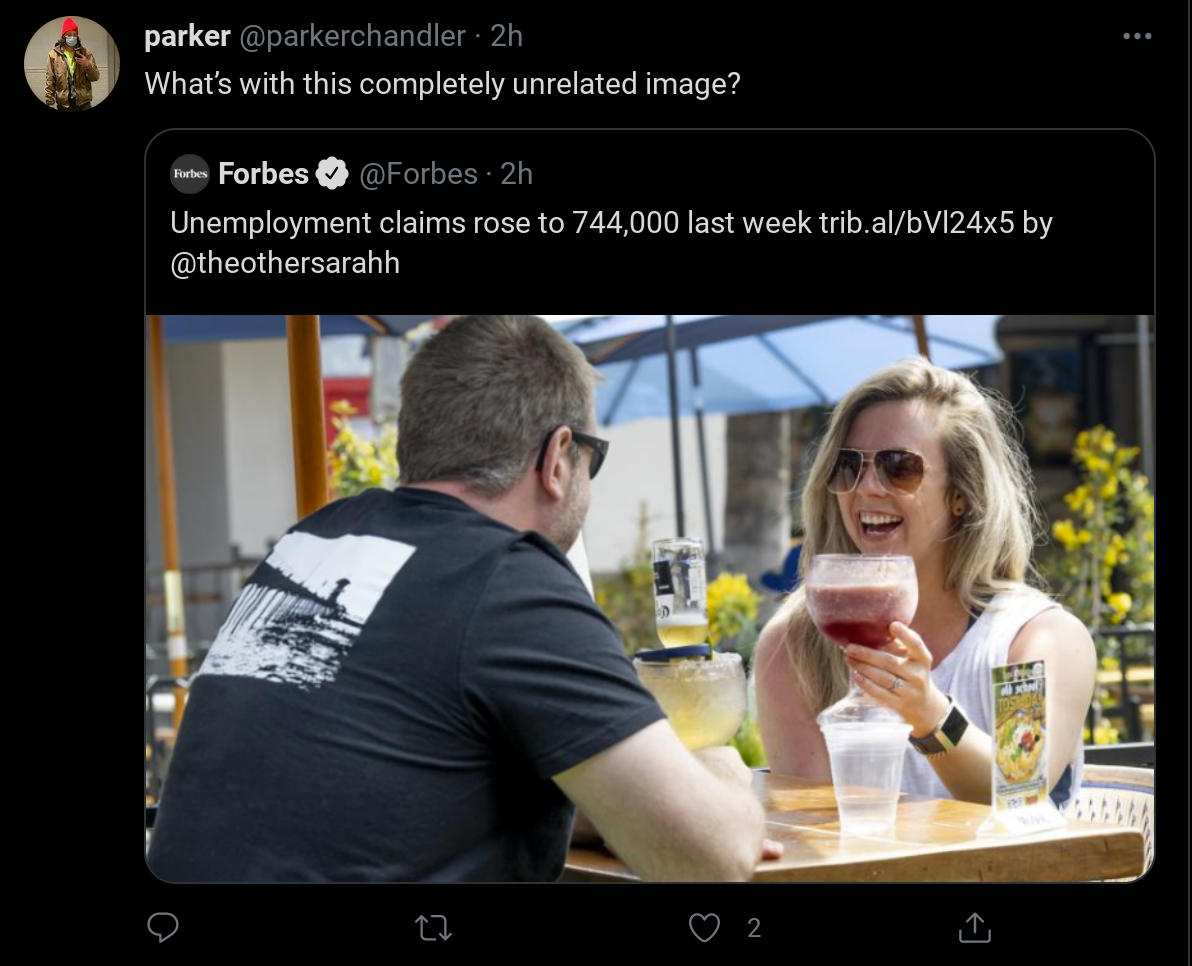
Don’t be like the Forbes article.
Instead, look for relevant photos, using a content curation tool if needed to easily find them from royalty-free sources such as Shutterstock. Take care when titling and describing these pictures, too, via the title and alt tags. Include a keyword in the alt text. Doing so will help search engines know what the image “means.”
Tip No. 5: Try out new content approaches as needed
We’ve focused a lot on how to do search engine positioning for existing content. You can also apply your positioning strategy to new content, too, so that it’s likelier to occupy prime SERP real estate from the start, instead of having to be re-optimized from a lower baseline.
If your current pages aren’t ranking high enough, consider some different approaches, such as:
- Longer or shorter form articles.
- Guest blogging with links back to your internal pages.
- Posts that lead to popular gated assets.
- A new social media strategy, which can have ripple effects on positioning and SEO.
Search engine positioning is ongoing work. Tailor these tips to your own situation and get professional help with search engine marketing as necessary to continually improve your positioning strategy and get more clicks.





